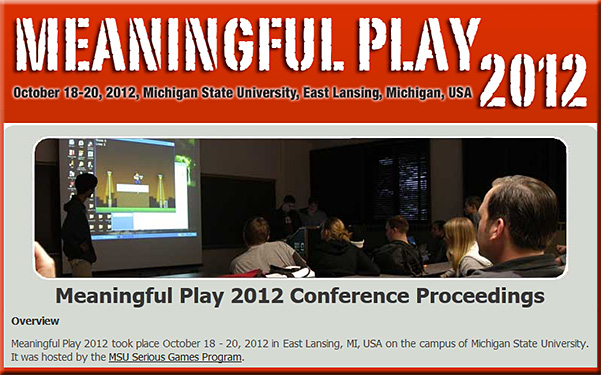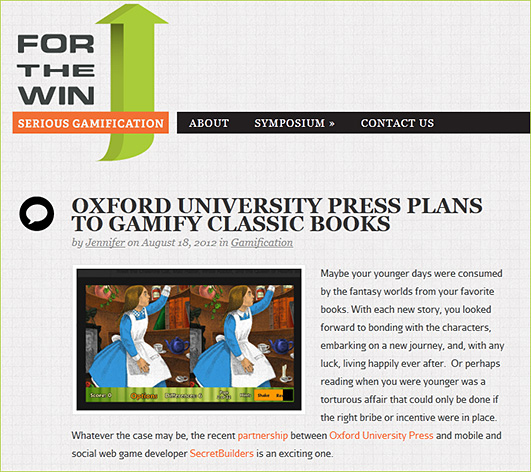From DSC:
I continue to watch this space as the foundations are being put into place for what I’m calling, “Learning from the Living [Class] Room.”
.
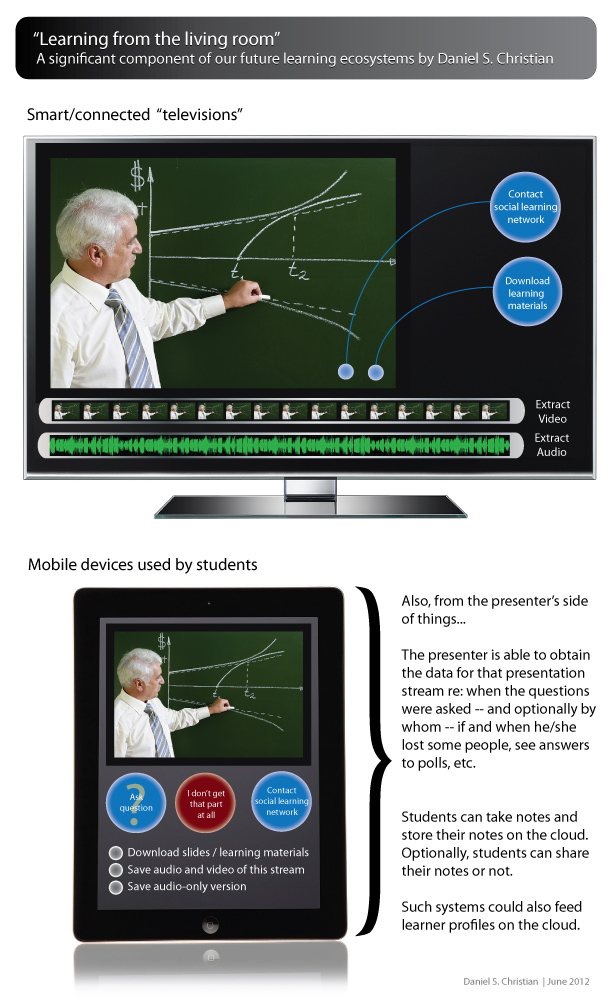




An à la carte Apple TV concept integrates Siri, FaceTime, and cable/satellite providers (Gallery) — from 9to5mac.com by Jordan Kahn
Example “screenshots” from this concept:
.
Also see:
From DSC:
This relates to what I’m calling “Learning from the Living [Class] Room”
.
![The-Living-Class-Room-Daniel-S-Christian---July-2012 The Living [Class] Room -- by Daniel Christian -- July 2012 -- a second device used in conjunction with a Smart/Connected TV](http://danielschristian.com/learning-ecosystems/wp-content/uploads/2012/07/The-Living-Class-Room-Daniel-S-Christian-July-2012.jpg)
The ‘Star Trek’ style touchscreen classroom of the future that’s set to replace books and blackboards — from dailymail.co.uk by Amanda Williams
Google releases global augmented reality game “Ingress” — from thecreatorsproject.com by Kevin Holmes
.
Excerpt:
Google [has] released an augmented reality game called Ingress that involves a shady world where two forces are pitted against each other, battling over a mysterious energy (the best kind) that’s recently been discovered. One side is the Enlightened who want to use the energy to control people’s minds via portals and the other is a group called the Resistance, who are fighting against them.
From DSC:
It’s not a stretch to see how educational gaming might dovetail nicely with augmented reality to create some seriously-engaging learning experiences!
From DSC:
I understand that Mr. George Lucas is going to express his generosity in donating the $4.05 billion from the sale of Lucasfilm to education.
Here’s a question/idea that I’d like to put forth to Mr. Lucas (or to the United States Department of Education, or to another interested/committed party):
Would you consider using the $4+ billion gift to build an “Online Learning Dream Team?”
.
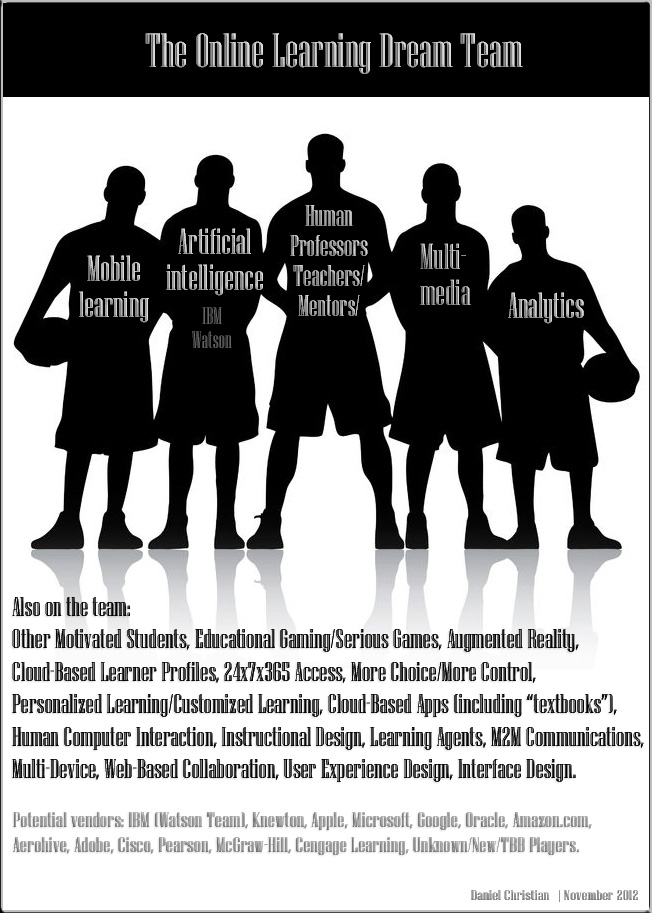
.
Original image credit (before purchased/edited by DSC)
yobro10 / 123RF Stock Photo
From DSC:
What do you think? What other “players” — technologies, vendors, skillsets, etc. — should be on this team?
Engaging children with the siren call of the app — from the New York Times by Geraldine Fabrikant
Excerpt:
Each summer for several years, a two-week seminar at the American Museum of Natural History has allowed 25 youngsters to use technology to resurrect a prehistoric marine animal by designing realistic 3-D models and sea environments.
Every year, the program, “Virtual World Institute: Cretaceous Seas,” for children ages 11 to 14, fills up quickly.
Yahoo! and Samsung form multi-year partnership to deliver Interactive TV — from dailyfinance.com by Business Wirevia The Motley Fool
Partnership to provide real-time, enhanced entertainment and advertising to homes across the United States
Excerpt:
SUNNYVALE, Calif. & RIDGEFIELD PARK, N.J.–(BUSINESS WIRE)– Yahoo! (NAS: YHOO) and Samsung today announced an expanded multi-year partnership to integrate Yahoo!’s Broadcast Interactivity platform into Samsung 2012 Smart TVs. Yahoo! Broadcast Interactivity, powered by its automatic content recognition (ACR) technology, SoundPrintTM, will be deployed in Samsung’s SyncPlus platform, enabling new opportunities for intelligent content discovery, advertising and engagement, bringing an unprecedented level of interactivity in the living room.
.
From DSC:
Another steps towards:
![The-Living-Class-Room-Daniel-S-Christian---July-2012 The Living [Class] Room -- by Daniel Christian -- July 2012 -- a second device used in conjunction with a Smart/Connected TV](http://danielschristian.com/learning-ecosystems/wp-content/uploads/2012/07/The-Living-Class-Room-Daniel-S-Christian-July-2012.jpg)
.
A fifth of TV sets connected to the Internet by 2016 — from digitaltvresearch.com
.
.
Welcome to Star Scholar U., where a personal brand is the credential — from The Chronicle by By Jeffrey R. Young
.
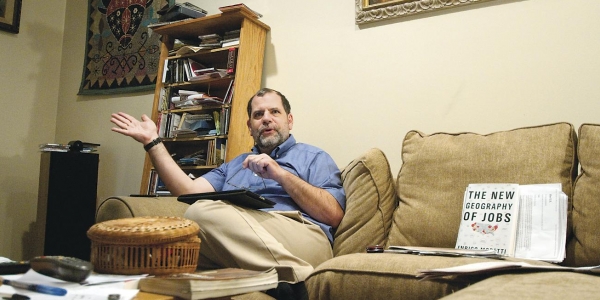
Keri Rasmussen for The Chronicle
Tyler Cowen, an economics professor at George Mason U., helped build an online-education site, Marginal Revolution U, based on a blog he runs with Alex Tabarrok. “In part we did it just to show it could be done—that you can have a Web site which looks nice and works,” Mr. Cowen said.
Excerpt:
A new kind of university has begun to emerge: Call it Star Scholar U.
Professors with large followings and technical prowess are breaking off to start their own online institutions, delivering courses with little or no backing from traditional campuses.
Founding a university may sound dramatic, but in an era of easy-to-use online tools it can be done as a side project—akin to blogging or writing a textbook. Soon there could be hundreds of Star Scholar U’s.
.
5 perspectives on the future of the human interface — from techcrunch.com by Alex Williams
Excerpt:
The next generation of apps will require developers to think more of the human as the user interface. It will become more about the need to know how an app works while a person stands up or with their arms in the air more so than if they’re sitting down and pressing keys with their fingers.
Also see:
.
Rethinking carrots: A new method for measuring what players find most rewarding and motivating about your game — from gamasutra.com by Scott Rigby, Richard Ryan
Excerpt:
The Player Experience of Need Satisfaction model (PENS) outlines three basic psychological needs, those of competence, autonomy, and relatedness, that we have demonstrated lie at the heart of the player’s fun, enjoyment, and valuing of games. By collecting players’ reports of how these needs are being satisfied, the PENS model can strongly and significantly predict positive experiential and commercial outcomes, in many cases much more strongly than more traditional measures of fun and enjoyment. And despite the simplicity of the model conceptually, it shows promise as a “unified theory” of the player experience by demonstrating predictive value regardless of genre, platform, or even the individual preferences of players.
.
Pearson project will let professors mix free and paid content in e-textbooks — from The Chronicle by Alisha Azevedo
Excerpt:
Pearson, a major textbook publisher, continued its push into digital education on Monday by introducing a service that allows instructors to create e-textbooks using open-access content and Pearson material.
.
A river of data — from educationnext.org by Bror Saxberg
Making the learning experience more effective
.
How should teaching change in the age of Siri? –– from MindShift
Excerpt:
Short of banning smartphones (a short-term solution, at best), the evolution of artificial intelligence services like Siri means that there will be a shift from a focus on finding the answer as the endpoint to a greater focus on analysis. You have the answer, but so what? What does that answer mean in a real-life situation?
.
Degreed launches crowdfunding campaign for reimagined ‘digital diploma’ — from gigaom.com by Ki Mae Heussner
San Francisco startup Degreed is challenging the traditional college diploma with an online service that tracks and scores educational achievements from established institutions as well as new online learning platforms. Ahead of a public launch in 2013, Degreed this week began a crowd funding campaign.
.
A capitalist’s dilemma, whoever wins on Tuesday — from the New York Times by Clayton Christensen
Excerpt (emphasis DSC):
In a way, this mirrors the microeconomic paradox explored in my book “The Innovator’s Dilemma,” which shows how successful companies can fail by making the “right” decisions in the wrong situations. America today is in a macroeconomic paradox that we might call the capitalist’s dilemma. Executives, investors and analysts are doing what is right, from their perspective and according to what they’ve been taught. Those doctrines were appropriate to the circumstances when first articulated — when capital[From DSC: or from an educational perspective, we could use the word information] was scarce.
But we’ve never taught our apprentices that when capital is abundant and certain new skills are scarce, the same rules are the wrong rules. Continuing to measure the efficiency of capital prevents investment in empowering innovations that would create the new growth we need because it would drive down their RONA, ROCE and I.R.R.
.
Gartner sees 821M unit smart device mkt in 2012; 1.2B 2013 — from forbes.com by Eric Savitz
.
Papers/tracks
(You can view the abstracts or complete papers where available.)
The power and possibility of mobile learning — as cross posted from evoLLLution.com (for LifeLong Learning)
Daniel S. Christian | October 2012
As I sat down to write about mobile learning, I struggled with narrowing down the scope of what I was going to attempt to address. Which angle(s) should I take?
And then I reflected on my morning so far. I helped my daughter wake up to the sounds of a song coming from my iPhone. She opened one eye, then the other, and soon, she was dancing around the room. Success!
I then proceeded to listen to my iPhone as I drove my car into work – it gave me the energy I needed to start my internal engines. (By the way, the idea of automobile-based technologies continues to grow, opening up further possibilities; but that’s a topic for another day.)
Then I caught up with a friend for coffee and he reached for his iPad. He showed me an app for the local Art Prize competition that’s currently going on in our area. He mentioned that if a person wasn’t in the immediately vicinity of the Art Prize event, that person could not vote on any of the pieces. However, if the GPS-based coordinates were within the approved range, a person could use that app to:
So by the time I pulled up to my PC at 9:00am, I had already been positively impacted by mobile technology in several ways. The common words and phrases that are often used to describe mobile learning and mobile technologies rang true and popped back into my mind: ubiquitous, always on, always connected, 24x7x365, convenient, etc.
As I enjoy peering into the future as well as pulse checking a variety of items, I would like to ask the following questions concerning the potential power and possibility of mobile learning as well as the relevant, emerging set of technologies that enable it:
![The-Living-Class-Room-Daniel-S-Christian---July-2012 The Living [Class] Room -- by Daniel Christian -- July 2012 -- a second device used in conjunction with a Smart/Connected TV](http://danielschristian.com/learning-ecosystems/wp-content/uploads/2012/07/The-Living-Class-Room-Daniel-S-Christian-July-2012.jpg)
.

.
.
The topics and potential routes that additional articles could take are almost endless. But I think it’s safe to say that mobile, lifelong learning is here to stay.
Listed below are some recent articles and resources if you are interested in pursuing the topic of mobile learning. I also have a section on my Learning Ecosystems blog dedicated to mobile learning.
If you are interested in what I’m calling Learning from the Living [Class] Room, you might be interested in these postings.
Some recent articles/resources regarding mobile learning:
Addendum:
![HigherEducationNowAtBat--DanielChristian Higher education used to be on deck, but is now at bat. [Christian]](http://danielschristian.com/learning-ecosystems/wp-content/uploads/2012/09/HigherEducationNowAtBat-DanielChristian1.jpg)
From DSC:
My way of thinking about what’s happening to higher education these days borrows from the sport of baseball: Higher education used to be on deck; but now, we’re at bat.
I’ve watched as the former power brokers throughout many other industries reluctantly got out of the dugout, nervously began their warm up on deck, and then timidly moved up to bat as well. They were trying to cling to the status quo. Which didn’t work. We’ve all seen the results. There are new power brokers in those industries now. (Which is I why I assert that there is danger in the status quo — our organizations need to always be at the work of reinventing ourselves.)
…
If I had to pick the top 2 forces driving change throughout the higher education landscape, I would have to say the cost of obtaining a degree and technology-enabled innovation.
…
Control is an illusion; people will find a way.
Apple TV and the transformation of web apps into tablet and TV dual screen apps — from brightcove.com by Jeremy Allaire
.
Excerpts:
Importantly, designers and developers need to shed the concept that “TVs” are for rendering video, and instead think about “TVs” as large monitors on which they can render applications, content and interactivity that is supported by a touch-based tablet application.
…
The key concept here is that this pervasive adoption of TV monitors is the tip of the spear in creating a social computing surface in the real world.
…
Specifically, Apple has provided the backbone for dual screen apps, enabling:
- Any iOS device (and OSX Mountain Lion-enabled PCs) to broadcast its screen onto a TV. Think of this as essentially a wireless HDMI output to a TV. If you haven’t played with AirPlay mirroring features in iOS and Apple TV, give it a spin, it’s a really exciting development.
- A set of APIs and an event model for enabling applications to become “dual screen aware” (e.g. to know when a device has a TV screen it can connect to, and to handle rendering information, data and content onto both the touch screen and the TV screen).
…
[Jeremy listed several applications for these concepts: Buying a house, buying a car, doctor’s office, kids edutainment, the classroom, retail electronics store, consuming news, consuming video, sales reporting, board games.]
.
Also see:
From DSC:
Graphically speaking — and approaching this from an educational/learning ecosystems standpoint — I call this, “Learning from the Living [Class] Room.
.
![The-Living-Class-Room-Daniel-S-Christian---July-2012 The Living [Class] Room -- by Daniel Christian -- July 2012 -- a second device used in conjunction with a Smart/Connected TV](http://danielschristian.com/learning-ecosystems/wp-content/uploads/2012/07/The-Living-Class-Room-Daniel-S-Christian-July-2012.jpg)

Related item:
Created by Knewton and Column Five Media
.
Also see:
The game introduces players to critical financial concepts through the virtual management of college rental houses, making players responsible for expanding and maintaining their houses by effectively utilizing their finances.
Paying bills on time, allocating funds to the proper accounts and monitoring monthly spending ultimately allows players to purchase rooms to expand their houses, host social events to attract future tenants, and increase their overall credit scores.
Meet Ms. Siri, your new teacher — from fastcompany.com by Anya Kamenetz
The next generation of artificial intelligence from the lab that built the iPhone’s Siri is powering an educational game.
From DSC:
Even with all of the technological advancements, I see the need for effective teachers, mentors, professors, instructors like never before. Although their roles may change, we’ll still need them big time. We may see students creating more of the content, while teachers guide them along the way.
.
.
.
.
From DSC:
My interest in this? All of this ultimately relates to:
.
![The-Living-Class-Room-Daniel-S-Christian---July-2012 The Living [Class] Room -- by Daniel Christian -- July 2012 -- a second device used in conjunction with a Smart/Connected TV](http://danielschristian.com/learning-ecosystems/wp-content/uploads/2012/07/The-Living-Class-Room-Daniel-S-Christian-July-2012.jpg)
Addendum on 9/12/12:
